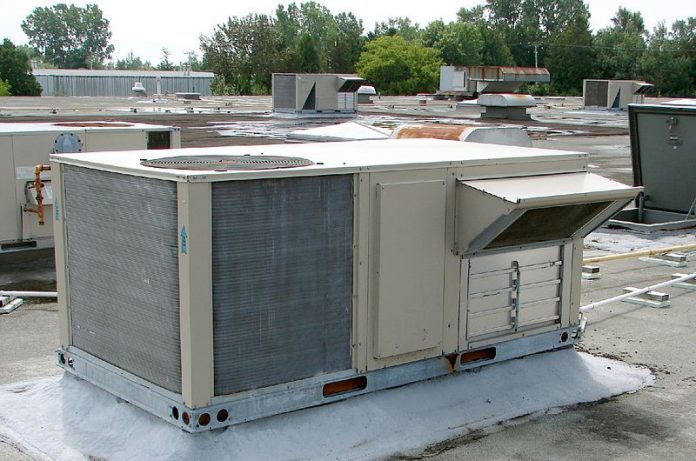Under direction of the Biden administration pursuant to the AIM Act, which was included in the 2021 Consolidated Appropriations Act, the U.S. Environmental Protection Agency (EPA) is beginning a multi-year stepped phase-out of the domestic use of the refrigerant hydrofluorocarbon (HFC).
Under the EPA’s plan, the use of HFC’s will decline of 85 percent over the next 15 years.
The EPA’s “Final Rule – Phasedown of Hydrofluorocarbons: Establishing the Allowance Allocation and Trading Program under the AIM Act,” sets an aggressive phasedown schedule as outlined, calling for a targeted HFC reduction of 10 percent by next year, and a reduction of 40 percent from current levels by 2024, 70 percent by 2029, and 85 percent by 2036.
The EPA claims a global HFC phasedown is “expected” to avoid up to 0.5° Celsius of global warming by 2100.
Biden Administration Claims Benefits
The phasedown is backed by a coalition of industry groups that see it as an opportunity to “supercharge” American leadership on domestic manufacturing and production of alternative refrigerants, said Michael Regan, the EPA Administrator in a late September briefing.
Regan also said transitioning to more climate friendly alternatives and more energy-efficient cooling technologies is anticipated to result in more than $270 billion in cost savings and public health benefits over the next 30 years.
“This action reaffirms what President Biden always says: When he thinks about climate, he thinks about jobs,” Regan said. “His administration knows that what’s good for the environment is good for the economy.”
Economic Benefit Claims Disputed
Claims that the forced phase-out of inexpensive, effective HFC’s will create jobs in the United States are exaggerated and probably, just the opposite will happen, it will cost jobs, says Ben Lieberman, a senior fellow at the Competitive Enterprise Institute.
“There have been a lot of disingenuous domestic jobs claims, and, in fact, some of the biggest corporate supporters of the AIM Act have been aggressively outsourcing many of the very jobs at issue,” Lieberman said. “This includes refrigerant makers Honeywell and Chemours, which located their first facilities making the new refrigerants in China before breaking ground in the United States.
“The AIM Act will also likely reduce exports by raising prices because most global demand growth for air conditioning and refrigeration equipment is expected to come from developing nations like India, China, and Indonesia,” Lieberman said. “These nations want the most affordable equipment, not the pricey eco-friendly versions required under the AIM Act.”
‘Biden Putting China First’
Biden’s HFC ban puts Chinese workers ahead of American workers, says David Wojick, Ph.D., an independent analyst and consultant.
“The HFC reduction rules are yet another example of Biden putting China first,” said Wojick. “Biden’s EPA specifically excludes all HFCs contained in imported products from the required reductions, even though they apply to all HFCs in products made in America.
“So foreign manufacturers do not have to go through the big expense of making substitutes work safely, of which many are flammable,” said Wojick. “This gives them a tremendous cost advantage, and of course because China is by far the biggest producer of HFCs, and the biggest manufacturer of the legion of products containing HFCs, it makes this policy a win-win for them.”
Higher Costs Likely
AIM’s HFC reduction mandate will almost certainly increase consumer costs, says Lieberman.
“The only purpose of this bill is to raise refrigerant costs,” said Lieberman. “Companies making greenhouse-friendlier refrigerants and equipment are free to make and sell them with or without the AIM Act.
“The only difference the bill would make is to shield these products from competition from cheaper HFC technologies by pushing the latter out of the market,” said Lieberman. “For example, one of the widely-used refrigerants targeted by the AIM Act is HFC-134a, which currently is available, as of this writing, for less than $7 per pound, while its patented replacement, HFO-1234yf, goes for about $50 per pound.”
Substitutes Potentially Dangerous
Lieberman also says HFC substitutes pose substantial risks of causing fires.
“Several of the HFC substitutes are classified by standard-setting bodies as flammable,” said Lieberman. “Flammability risks can largely be engineered around, but they cannot be completely eliminated.
“It is also problematic that there are many state and local building code issues regarding the use of flammable refrigerants—especially in equipment located adjacent to a business’ employees or customers—that are yet to be resolved,” Lieberman said. “Further, servicing of units using flammable refrigerants involves additional precautions and thus higher repair bills, especially for residential use.”
Kevin Stone (kevin.s.stone@gmail.com) writes from Arlington, Texas



























looking for Alternatives for 407c